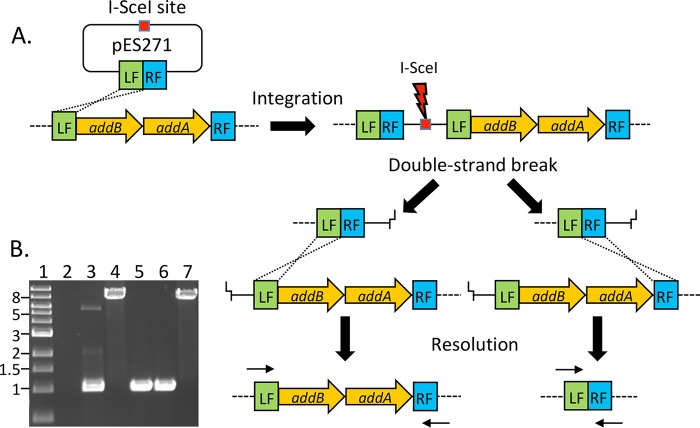FIG 1.
Schematic illustrating the generation of markerless deletions in C. difficile by induction of double-strand breaks. (A) DNA flanking the addAB genes (LF, left flank; RF, right flank) was amplified and ligated into a plasmid containing an I-SceI recognition sequence (pES271). Homologous recombination between the LF sequences on the plasmid and chromosome led to integration of the vector. The introduction of an I-SceI-expressing plasmid generates a double-strand break in the chromosome which must be repaired for the cell to survive. Recombination between LF sequences regenerates the original chromosome configuration of addAB, while recombination between RF sequences generates a deletion of the intervening DNA. Small arrows above LF and below RF represent the positions of primers used to differentiate between wild-type and deletion genotypes. (B) Example of an agarose gel showing PCR products for genotyping-resolved integrants. Primers used in the reaction correspond to the small arrows at LF and RF shown in panel A. The wild-type amplicon is 8.2 kb, while the deletion amplicon is ∼1 kb. Lane 1, 1-kb size ladder; lane 2, negative PCR control; lane 3, deletion amplicon from pES271; lane 4, wild-type addAB amplicon from 630Δerm; lanes 5 and 6, products from two independent ΔaddAB mutant strains; lane 7, product from resolved wild-type strain.

